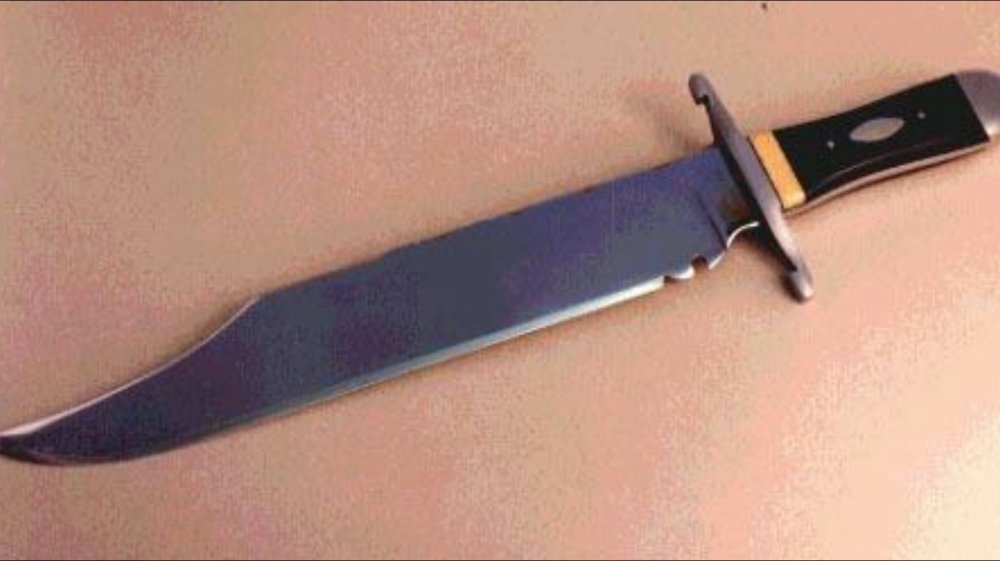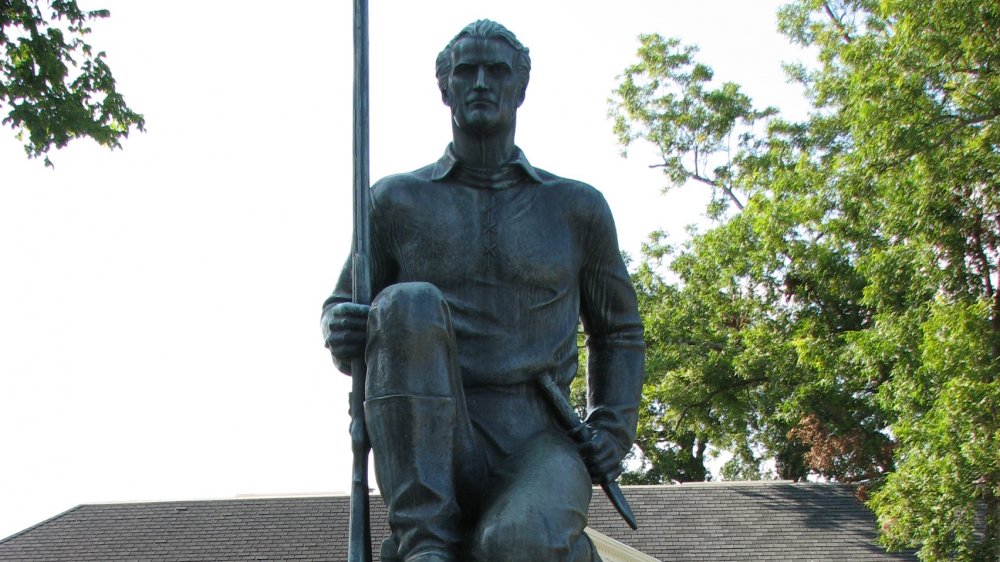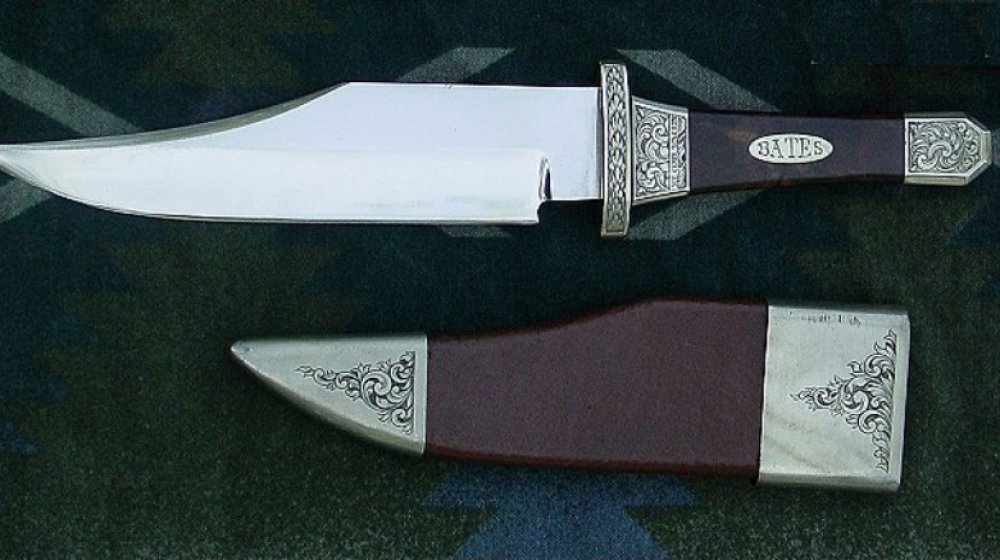The Inventor Of The Bowie Knife Isn't Who You Think
James "Jim" Bowie was, according to the Encyclopedia of Arkansas, part of a pioneer family who "who settled in early Arkansas and Louisiana" and was notorious for "kill[ing] one man and seriously injur[ing] another with a 'big knife”' in a brawl that came to be known as the "Sandbar Duel" on September 19, 1827 in Natchez, Mississippi. Per Legends of America, the duel was actually supposed to take place between Samuel Levi Wells III and Dr. Thomas Harris Maddox; Bowie had merely accompanied Wells. "All hell broke loose," however, after Wells and Maddox fired at each other and missed. One thing led to another. Eyewitnesses spread the word about the guy with the big knife and his "prowess with the lethal blade." People started asking blacksmiths to make them "Bowie knives."
Just what makes a knife a Bowie knife, anyway? According to Field & Stream, even knife experts can't agree on what makes a "true Bowie," but they have nevertheless "shaped American ideals of what a knife should be for nearly 200 years." Common characteristics include a coffin-shaped handle, a heavy cross guard — the piece of metal found at a right angle to the blade above the handle — and a "sweeping clip blade" with a "partially sharp top edge." The blade itself might measure anywhere from 9-12 inches in length.
Jim Bowie made the knife famous
The Encyclopedia of Arkansas notes that at the time of their original popularity, a Bowie knife's "quality of finish" differentiated it from other hunting knives or daggers. They tended to be sheathed in leather and were commonly used in hunting rather than duels.
The Encyclopedia of Arkansas also mentions that Jim's brother Rezin "promoted the knife's association with the Bowie name" by giving away several knives, and even taking credit for designing the specific knife Jim had used at the Sandbar Duel. Jim Bowie himself moved on to Texas and renounced his American citizenship, becoming a Mexican citizen on September 30, 1830. By 1832 he became a commander of the citizens' militia, and was one of the officers commanding a group of volunteers at the Battle of the Alamo. Bowie died there on March 6, 1836, along with Davy Crockett and the rest of the 180 or so defenders.
In 1936, a statue of Jim Bowie (above) was erected in Texarkana, Texas during the celebration of the centennial of Texas, according to the Library of Congress. A "Bowie knife" features prominently within the sculpture. Despite Bowie's longtime association with the knife that bears his name, it was neither Jim nor his brother Rezin who created the infamous knife.
James Black made the knife
The Encyclopedia of Arkansas reports that on December 8, 1841, the Washington Telegraph newspaper named James Black as the inventor of the knife. Black was a skilled blacksmith who made distinctive knives "embellished with silver plating on the ricasso (the part of the blade immediately above the handle) and silver around the distinctive, coffin-shaped handle," the design of which became "the most copied of all Bowie knives."
Black claimed to have made a knife for Jim Bowie. The Washington Telegraph article further reported that Black's friends, Arkansas statesmen Daniel Webster Jones and Augustus Garland, corroborated his story.
The knives were also known as the "Arkansas knife" or "Arkansas toothpick"; several states reportedly passed laws specifically outlawing them. Towards the end of his life, Black was blind and suffering from dementia. According to his entry in the Encyclopedia of Arkansas, in 1870 he tried in vain to recall "the secret method of how he made his knives," eventually "rubb[ing] his forehead until it began to bleed, finally crying out, "My God! My God! It has all gone from me!"


